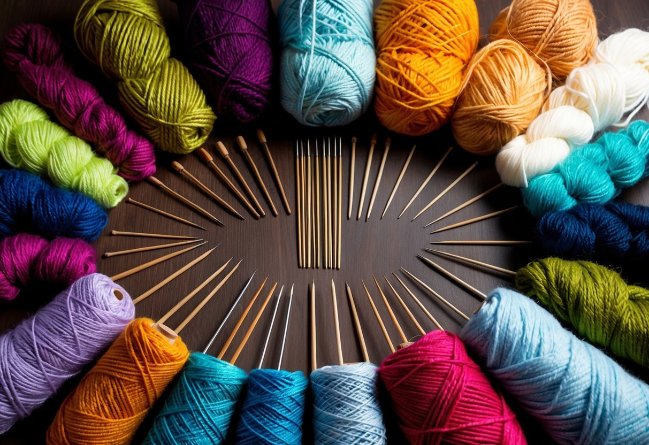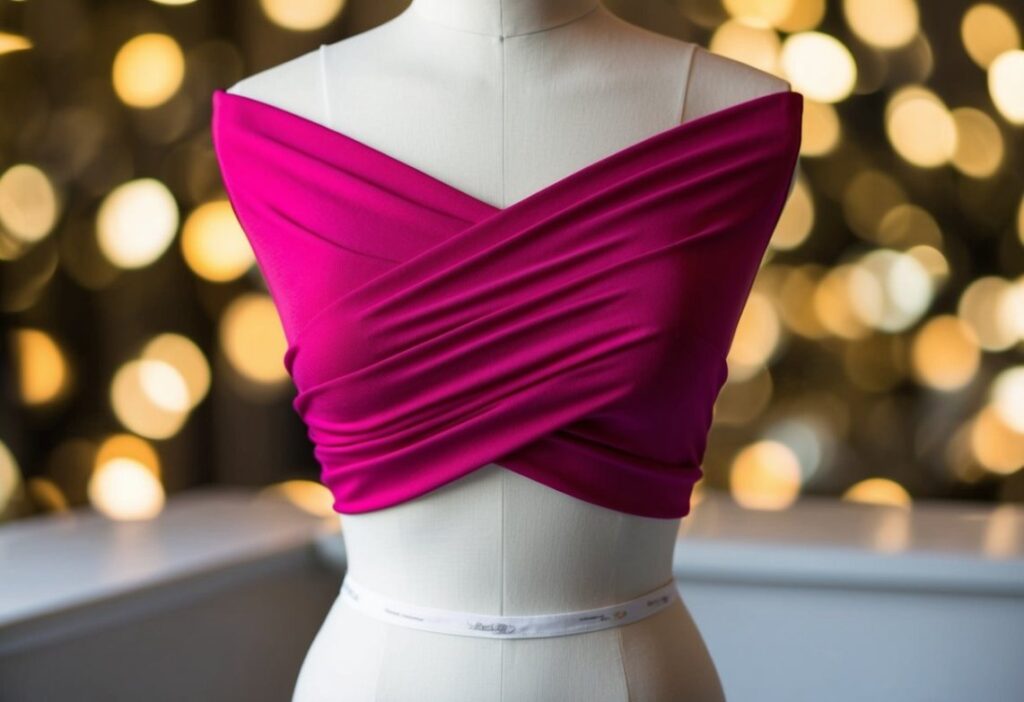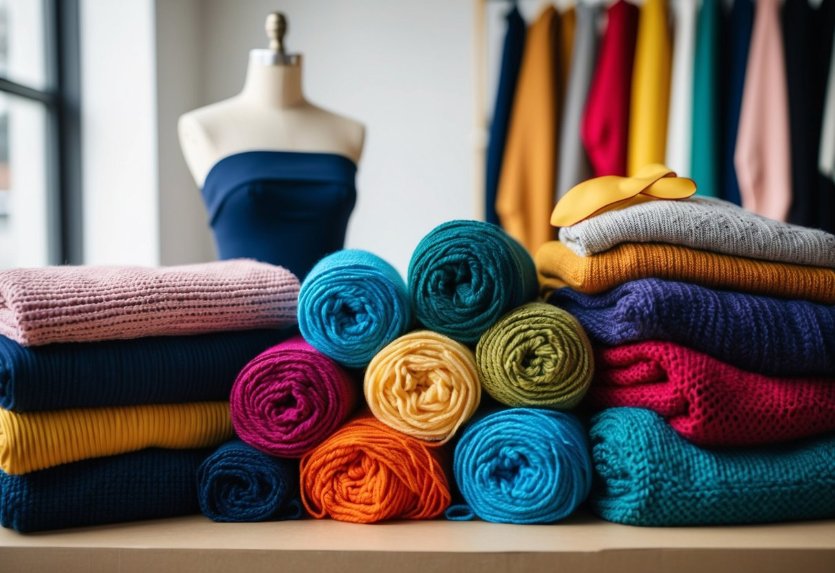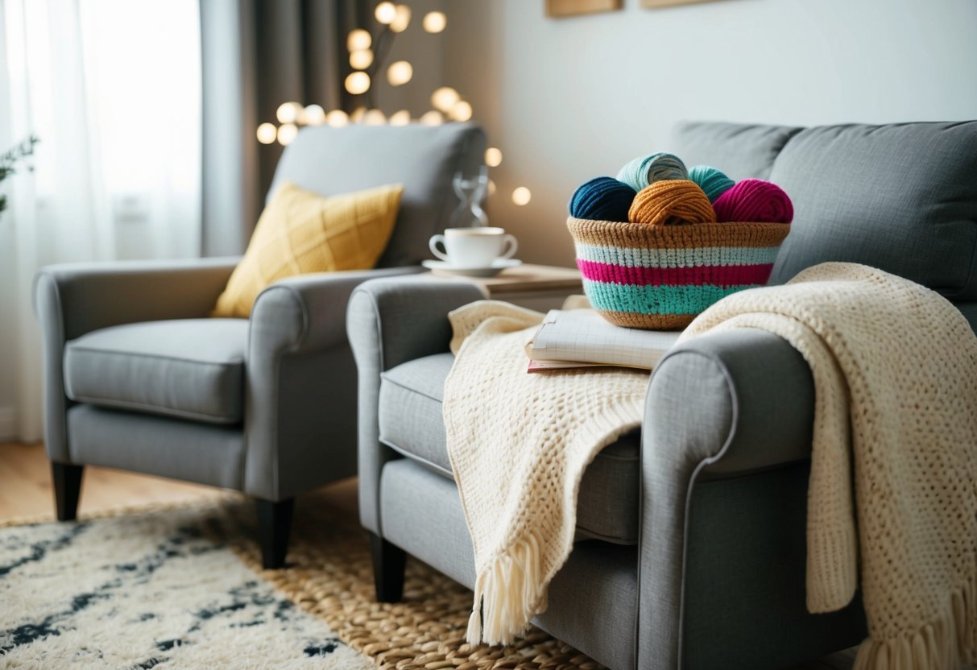Understanding the Versatility of Knitted Textiles: From Structure to Performance Characteristics
Knit fabrics transform everyday clothing into comfortable, versatile garments that move with you. These specially constructed textiles use interconnected loops of yarn to create flexible materials that stretch and recover their shape. Different types of knit fabrics range from lightweight jersey to structured interlock, each offering unique properties for specific uses.
From cosy jumpers to stretchy sportswear, knit fabrics appear in countless applications. The textile industry produces knits using various fibres, including natural wool and cotton, as well as synthetic materials like viscose and polyester. Modern knit fabric manufacturers create innovative blends that combine durability with comfort.
On This Page
Key Takeaways
- Knit fabrics consist of interlocked yarn loops that provide natural stretch and flexibility
- Natural and synthetic fibres create knits with different properties for varied uses
- Modern knitting technology allows for specialised performance features in everyday garments
The Basics of Knit Fabrics
Knit fabrics are textile materials made from interlocking loops of yarn. These versatile materials offer excellent stretch and comfort for clothing and other textile products.
Knit Versus Woven Fabrics
Knit fabrics differ from woven fabrics in their construction method. While woven fabrics use a criss-cross pattern of threads, knits create loops that interlock with each other.
The looped structure gives knit fabrics their distinctive stretch properties. They can expand and contract whilst maintaining their shape, making them perfect for fitted garments.
Knits tend to be more wrinkle-resistant than woven fabrics. They also provide better insulation and breathability due to the tiny air pockets created by their looped structure.
Types of Knit Fabrics
Two primary categories of knit fabrics exist: weft knits and warp knits. Weft knits form horizontal rows of loops across the fabric width.
Common weft knit varieties include:
- Jersey knit
- Rib knit
- Interlock knit
- French terry
Warp knits create vertical columns of loops running lengthwise. These knits typically offer more stability and less stretch than weft knits.
The recovery properties of knit fabrics refer to how well they return to their original shape after stretching. Different knit types offer varying levels of recovery based on their construction.
Materials and Yarns Used in Knitting

Knit fabrics incorporate diverse yarns like cotton, silk, wool, and synthetic fibres to create versatile textiles. Each material brings unique properties that affect the fabric’s final characteristics.
Cotton Jersey Characteristics
Cotton jersey stands as a fundamental knit fabric in textile manufacturing. The fabric uses a single needle technique that combines knit and purl stitches to create a soft, breathable material.
The yarn weight significantly impacts the final product. Thicker yarns create denser fabrics, whilst thinner yarns produce lighter, more delicate jerseys.
Cotton jersey offers excellent moisture absorption and comfort against the skin. These properties make it ideal for:
- T-shirts and casual wear
- Athletic clothing
- Children’s garments
- Bedding materials
French Terry and Its Uses
French terry utilises loops on one side and a flat surface on the other. This unique construction creates a fabric that excels at moisture management whilst maintaining warmth.
The material typically contains a high percentage of cotton, though modern versions often include stretch fibres for enhanced comfort. French terry’s distinctive properties make it perfect for:
- Sweatshirts and hoodies
- Casual trousers
- Athletic wear
- Loungewear
The fabric weight can vary from light to medium-heavy, affecting its seasonal versatility.
Understanding Stretch in Knits

Knit fabrics have unique stretching properties that make them ideal for comfortable, form-fitting garments. The amount of stretch varies based on the knit construction and fibre content, with some fabrics stretching up to 100% in multiple directions.
The Importance of Stretchy Knit
Measuring stretch percentage is essential for achieving the perfect garment fit. A basic stretchy knit typically extends 25-40% of its original length.
The addition of spandex or elastane dramatically increases stretch capabilities. These fabrics work brilliantly for:
- Active wear
- Swimming costumes
- Form-fitting tops
- Leggings
Stretch recovery is just as important as stretch itself. Good quality knits should return to their original shape after being stretched.
Interlock and Double Knit Fabrics
Interlock and double knit fabrics offer more stability than single knits. These structured knits typically stretch 15-25% of their original measurement.
Double knits have these key characteristics:
- More substantial weight
- Less curl at the edges
- Better shape retention
- Equal appearance on both sides
These fabrics are perfect for:
- Dresses
- Skirts
- Smart casual trousers
- Professional wear
Knit Fabric Constructions

Knit fabric construction creates textile structures through interlocking loops of yarn. The two primary methods are weft knitting and warp knitting, each producing distinct characteristics.
Rib Knit Features
Rib knit forms vertical wales that create raised ridges on both sides of the fabric. These vertical rows of loops form distinctive ribs that run lengthwise through the material.
The structure creates natural elasticity, making it ideal for cuffs and waistbands. The fabric stretches more across its width than its length.
Common rib patterns include 1×1 (alternating one knit stitch with one purl stitch) and 2×2 (two knit stitches followed by two purl stitches).
The Making of Double Knit Structures
Double knit fabrics consist of two layers of knitting created simultaneously. The structure uses two sets of needles positioned opposite each other.
The resulting fabric has identical faces on both sides with no visible wrong side. This creates a thicker, more stable material that resists curling at the edges.
Double knits offer excellent shape retention and durability. The tight construction makes them perfect for structured garments like jackets and trousers.
The fabric’s stability comes from its interlinked structure, which reduces stretching while maintaining comfort.
Fashion Applications

Knitted fabrics revolutionise modern fashion through their versatility and comfort. The unique properties of knit construction create garments that move naturally with the body whilst maintaining their shape.
Sweaters and Cardigans
Traditional knitwear forms the backbone of cold-weather fashion. Modern sweaters utilise both hand-knitting and machine-made techniques to create diverse textures and patterns.
Cardigan styles range from lightweight cotton blends for spring to thick wool varieties for winter. The stretchy properties of knitted fabric allow for comfortable layering without bulk.
Common sweater constructions include:
- Cable knit for texture
- Ribbed knit for fitted shapes
- Jersey knit for casual wear
Innovative Uses of Stretch Velvet
Stretch velvet combines the luxurious feel of traditional velvet with modern knitting technology. This versatile fabric appears in evening wear, athletic clothing, and casual fashion.
Key benefits of stretch velvet include:
- Enhanced draping capabilities
- Improved comfort during movement
- Reduced creasing compared to woven velvet
Designers use stretch velvet in form-fitting dresses, leggings, and performance wear. The material’s natural stretch allows for complex garment shapes whilst maintaining comfort.
Practical Tips for Consumers

Smart shopping and proper care techniques can make a big difference in how knit garments look and last. These simple steps will help you make informed choices and keep your knits in top condition.
Making the Right Choice While Shopping
Check the stretch and recovery of knit fabrics before buying. Pull the fabric gently and watch how it returns to shape – quality knits should bounce back quickly without warping.
Look for pills or signs of wear on the fabric surface. Run your hand across the material to check for consistency and any rough spots.
Essential Shopping Checks:
- Check the care label for washing instructions
- Test fabric opacity by holding it up to light
- Examine seams and stitching quality
- Verify the fabric weight matches your needs
Caring for Knit Garments
Always wash knits in cool or lukewarm water to prevent shrinkage. Turn garments inside out before washing to protect the outer surface.
Avoid hanging wet knits, as this can stretch them out of shape. Instead, lay them flat to dry on a clean towel.
Care Guidelines:
- Use gentle detergents made for delicate fabrics
- Skip the tumble dryer when possible
- Store folded rather than on hangers
- Remove pills with a fabric shaver as needed
Shape garments while damp by gently stretching them back to their original dimensions. This helps maintain proper fit and prevents unwanted shrinkage.
Engagement with Customers
Building strong connections with knit fabric buyers leads to repeat purchases and brand loyalty through personalised communications and rewards programmes.
Benefits of Subscribing to a Newsletter
Email newsletters keep knit fabric customers informed about new product launches, seasonal collections, and textile innovations.
Regular customer engagement through email builds trust and strengthens relationships in the textile industry.
Subscribers receive exclusive previews of upcoming fabric collections and early access to sales. Special subscriber-only content often includes:
- Care guides for different knit types
- Trending fabric patterns and textures
- Expert tips on fabric selection
- Updates on sustainable textile innovations
Rewarding Customer Loyalty with Discounts
Customer reaction to products helps companies determine which styles deserve loyalty rewards and promotional offers.
A tiered loyalty programme encourages larger orders by offering increasing discount levels based on purchase volume. Common reward structures include:
- 5% off orders over £500
- 10% off orders over £1,000
- Free shipping on bulk purchases
- Birthday discount vouchers
These incentives encourage customers to consolidate their purchases with a single supplier, creating stronger business relationships.
The Future of Knit Fabrics
Sustainable knit fabrics are leading the way forward, with manufacturers focusing on organic cotton, bamboo, and recycled fibres. These eco-friendly materials meet growing consumer demand for environmentally responsible textiles.
New technology is transforming how knit fabrics are made. Advanced machines now combine weft knitting, warp knitting and weaving techniques to create innovative fabric structures with enhanced properties.
Body mapping technology in warp knit fabrics is revolutionising sportswear and athletic clothing. These smart textiles can provide targeted compression and ventilation exactly where needed.
Digital knitting innovations are enabling more complex designs. Manufacturers can now create intricate patterns and embed logos, text and team emblems directly into the fabric.
Sweatshirt fleece is evolving with new performance features. Modern versions incorporate moisture-wicking properties, temperature regulation, and antimicrobial treatments while maintaining the classic comfort people love.
Smart textiles and electronic components integrated into knit fabrics will enable health monitoring and environmental sensing. These technologies will create new applications in medical care, athletics, and everyday clothing.
Frequently Asked Questions
Knit fabrics play a vital role in modern clothing and textiles. These versatile materials come in many forms with distinct properties that make them ideal for different uses.
What are the characteristics of high-quality knit fabrics?
High-quality knit fabrics resist wrinkles and maintain their shape after washing. They display even stitching without gaps or loose threads.
The best knit fabrics have consistent thickness throughout and excellent recovery after stretching. They should feel smooth against the skin without pilling or snagging.
Which types of knit fabric are most suitable for winter garments?
Rib knit fabrics excel in cold weather due to their insulating properties. The ribbed texture traps warm air between the fibres.
Double knits and interlock jerseys provide excellent warmth whilst maintaining breathability. These thicker knits create cosy jumpers and winter accessories.
How does the breathability of knit fabrics compare to other types of textile?
Knit fabrics allow excellent air circulation due to their looped construction. The tiny spaces between yarns create natural ventilation.
Single jersey knits offer particularly good breathability, making them perfect for sportswear and summer clothing.
From what sources can one commonly procure knit fabric by the metre in the UK?
Fabric shops in major UK cities stock wide selections of knit textiles. Many haberdasheries specialise in knit fabrics for home sewists.
Online UK retailers offer extensive ranges of knit fabrics with detailed descriptions and swatches available upon request.
Can you identify various products that are typically made from knit fabric?
T-shirts, polo shirts and casual tops commonly use jersey knit fabric. Athletic wear relies on stretchy knit materials for comfort during movement.
Jumpers, cardigans and winter accessories typically use heavier gauge knits. Baby clothes often feature soft, stretchy knit fabrics.
What are the environmental implications of producing knit fabrics?
Modern knit fabric production uses significant water and energy resources. Some manufacturers now implement closed-loop water systems to reduce waste.
Recycled yarns and organic fibres provide more sustainable options for knit fabric production. Many knit fabrics can be recycled at the end of their life cycle.
Related Posts:

